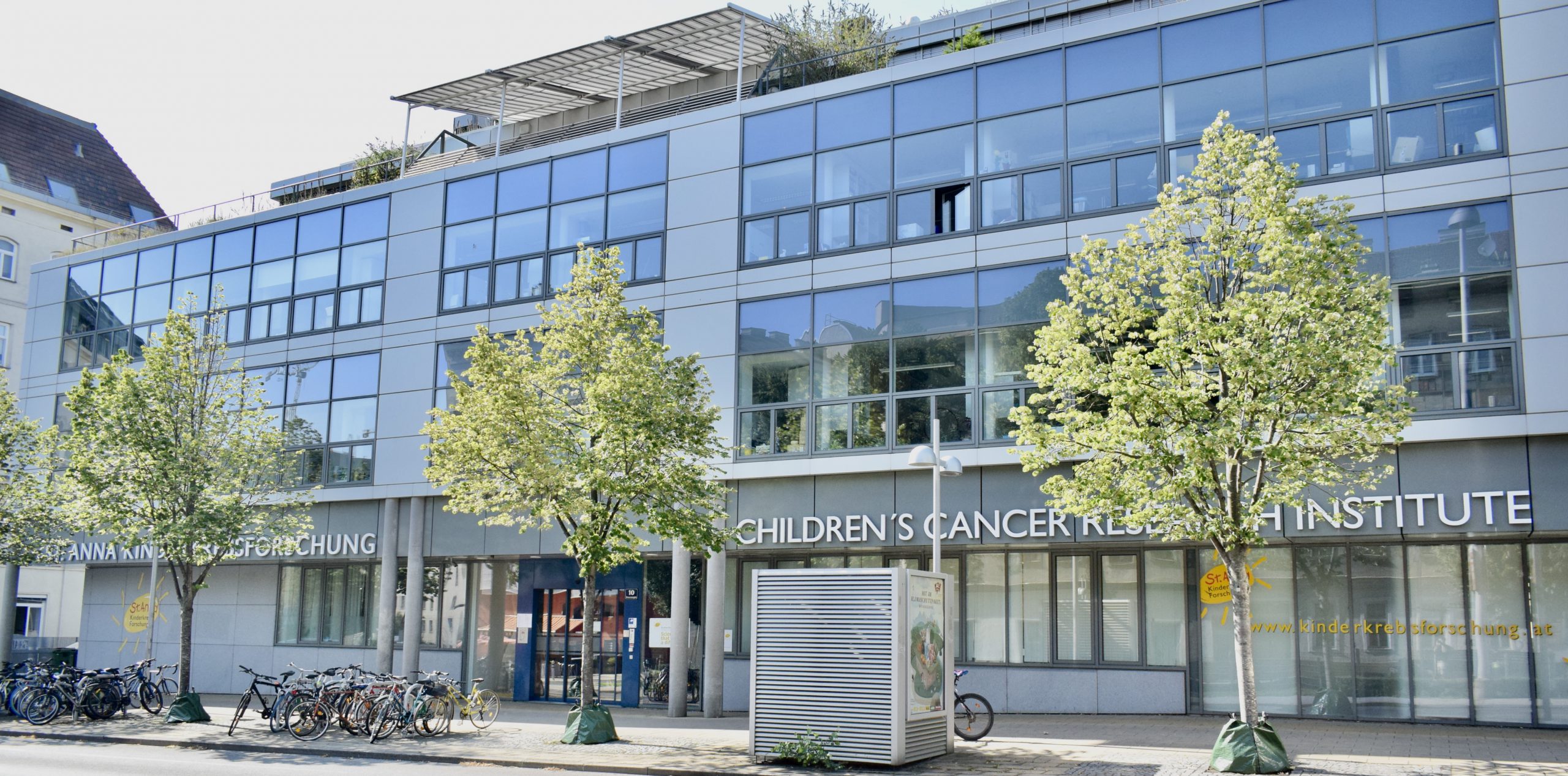
Mission
St. Anna Children’s Cancer Research Institute (CCRI) strives to improve treatment for children and adolescents with cancer by bringing together translational and clinical research with open-minded exploration of basic disease mechanisms. Every year, 250-300 children and adolescents in Austria alone are diagnosed with cancer. Thanks to research, more than 80 % of these children will now survive. Integrally connected with St. Anna Children’s Hospital, experimental and theoretical scientists at CCRI work side-by-side with oncologists to tackle eminent issues in pediatric cancer research and therapy.
The CCRI trains a generation of passionate and courageous researchers thriving on this interdisciplinary exchange and it hosts state-of-the-art experimental facilities to power this mission. CCRI tears down conventional boundaries by constant exchange and collaboration with outside institutions in order to go the extra mile for the benefit of the patient. Bringing research from bench to bedside, CCRI headquarters multiple clinical trials and is tightly integrated in international networks to maximize innovation and impact.
Understand the disease to be able to fight it
Based on decades of biomedical research, we now have data and bioinformatics tools at our disposal to investigate more precisely than ever before the molecular characteristics of cancer development, disease progression and healing processes. Deciphering the human genome, epigenome, proteins, etc., provides crucial information to combat rare diseases such as childhood cancer. This corresponds to the definition of precision oncology, according to which precise treatment is based on a deep molecular understanding of the disease.
The asset of CCRI: Bringing two worlds together
There is one basic motive behind the research performed at CCRI: The search for high-precision and fast acting new weapons against cancer in children. Hence, the intensive research activities are all about exposing the strategies and schemes of cancer, this frightening master of survival, as well as developing breakthrough therapies for better treatment or, in the best case, the healing of children affected by cancer. In pursuit of these goals, we employ the most cutting-edge biomedical methods to confront pediatric cancer – be it in terms of deciphering its causes or of providing well-devised, innovative treatment concepts.In so doing, CCRI is one of the top addresses for the treatment of pediatric cancer according to the maxim “from bench to bedside” i.e., the commitment to inseparably tie clinical practice to research, in order to expand the knowledge about this deadly disease.
Cancer doesn´t care about age

Founding father and former director of CCRI
In the early years of my professional career it was unfortunately the order of the day that we lost three quarters of our young patients to cancer. To find new treatment methods against this threat to the lives of children and adolescents was the driving force behind the establishment of CCRI in 1988. What had humble beginnings as a small facility with a few employees has grown into a renowned and globally recognized institute for childhood cancer research that has brought about ground-breaking advances and continues to do so day-by-day. In the meantime, the chances of cure for many types of pediatric cancer have increased to an extend that I myself would not have thought possible 30 years ago.
The guiding principle of our research has always been to think in multidisciplinary terms. This has included the involvement, from an early stage, of researchers from other disciplines, such as biology and genetics, and the intensive promotion of international networking. An individual can achieve a lot, but real breakthroughs in the fight against cancer can be achieved only by teams, the more multidisciplinary and multinational, the better